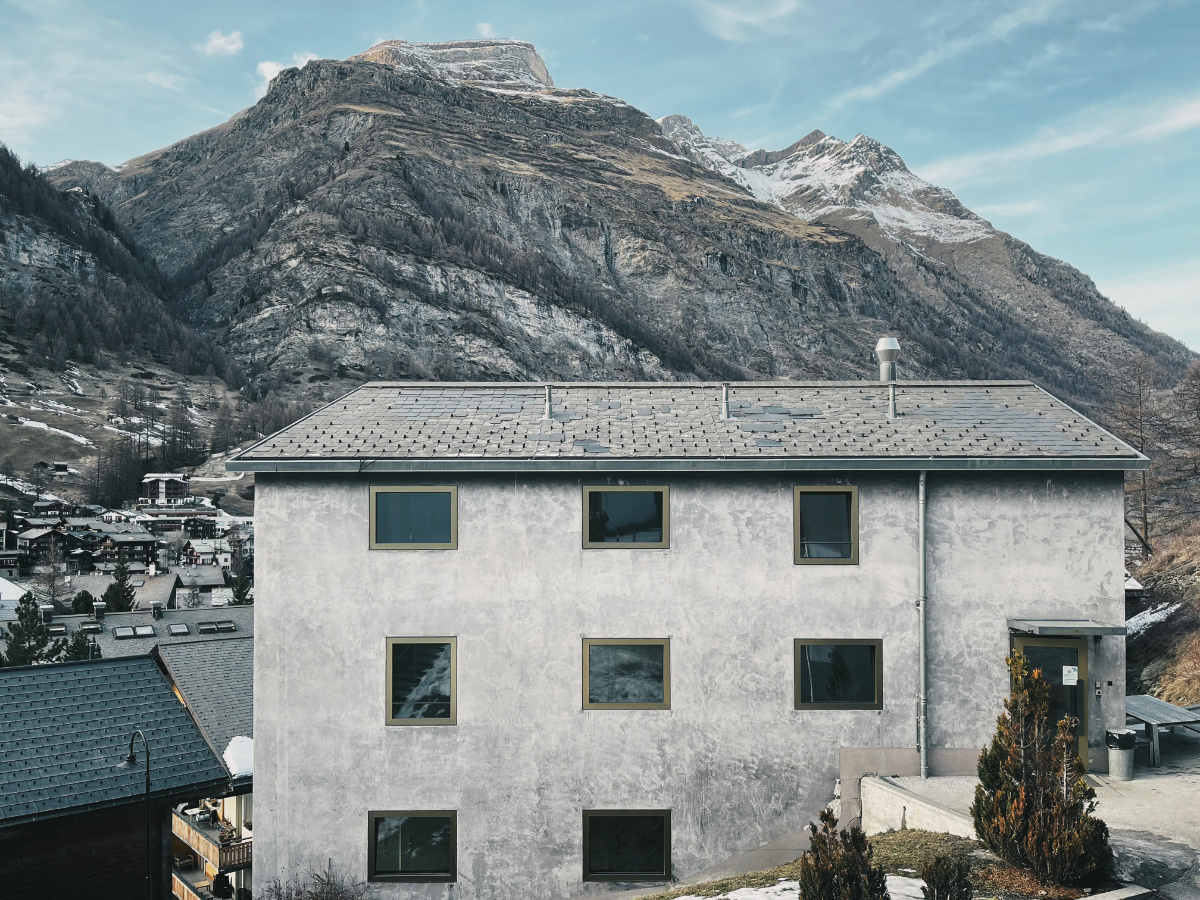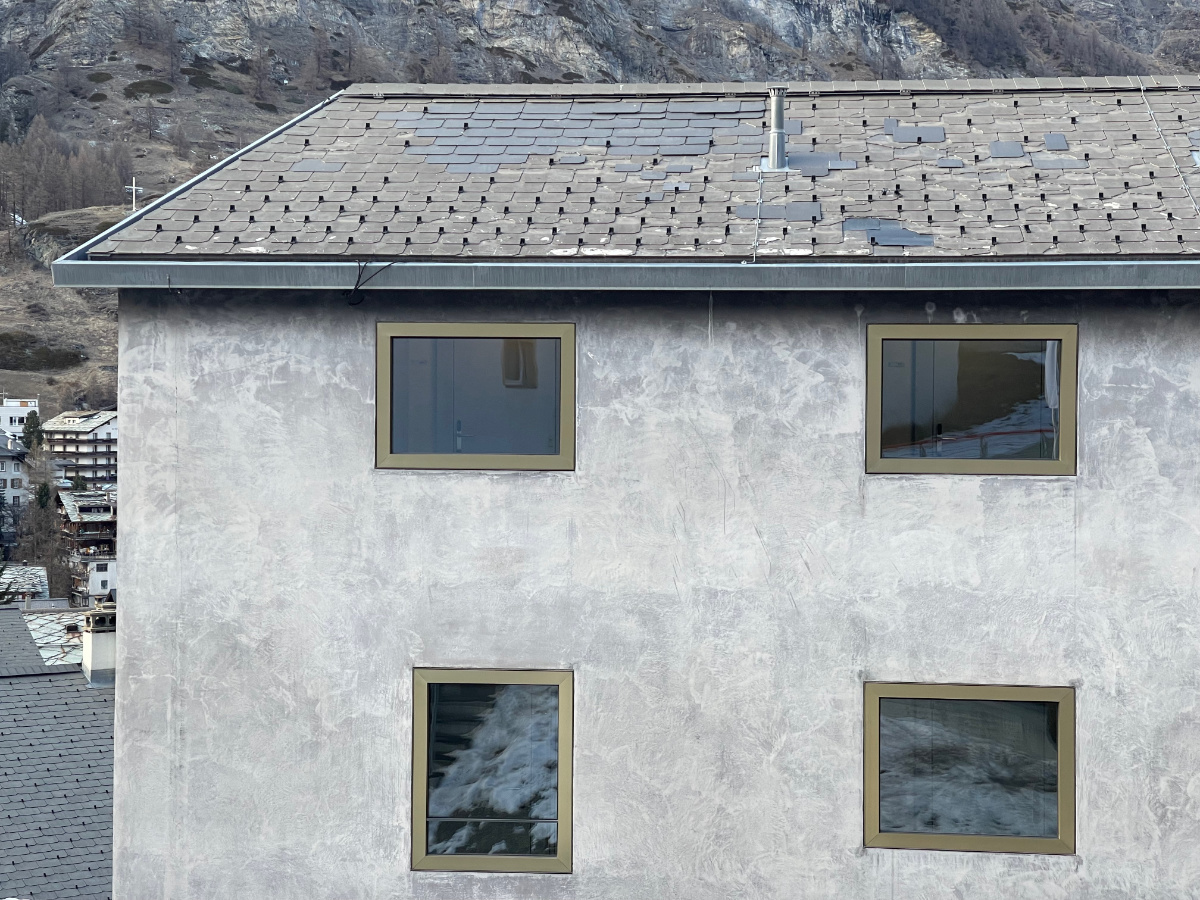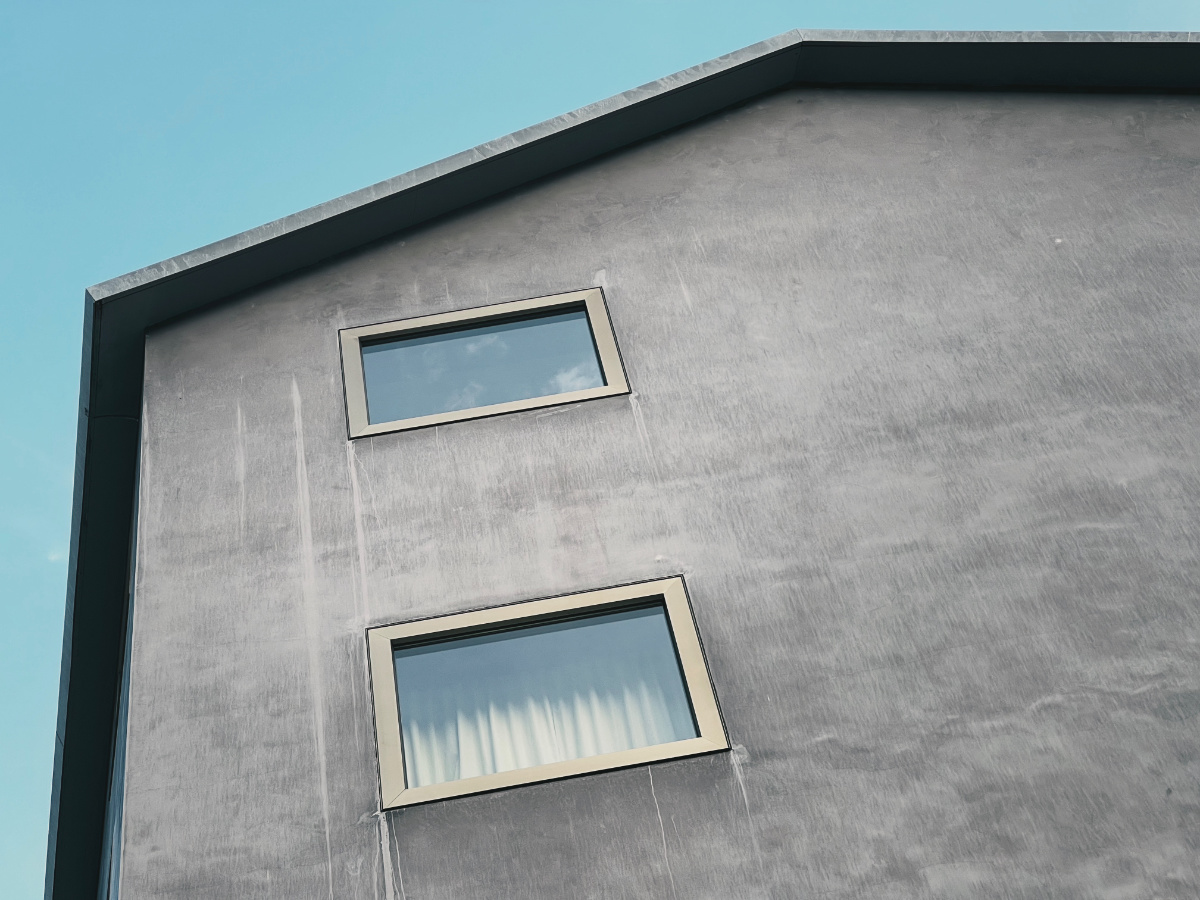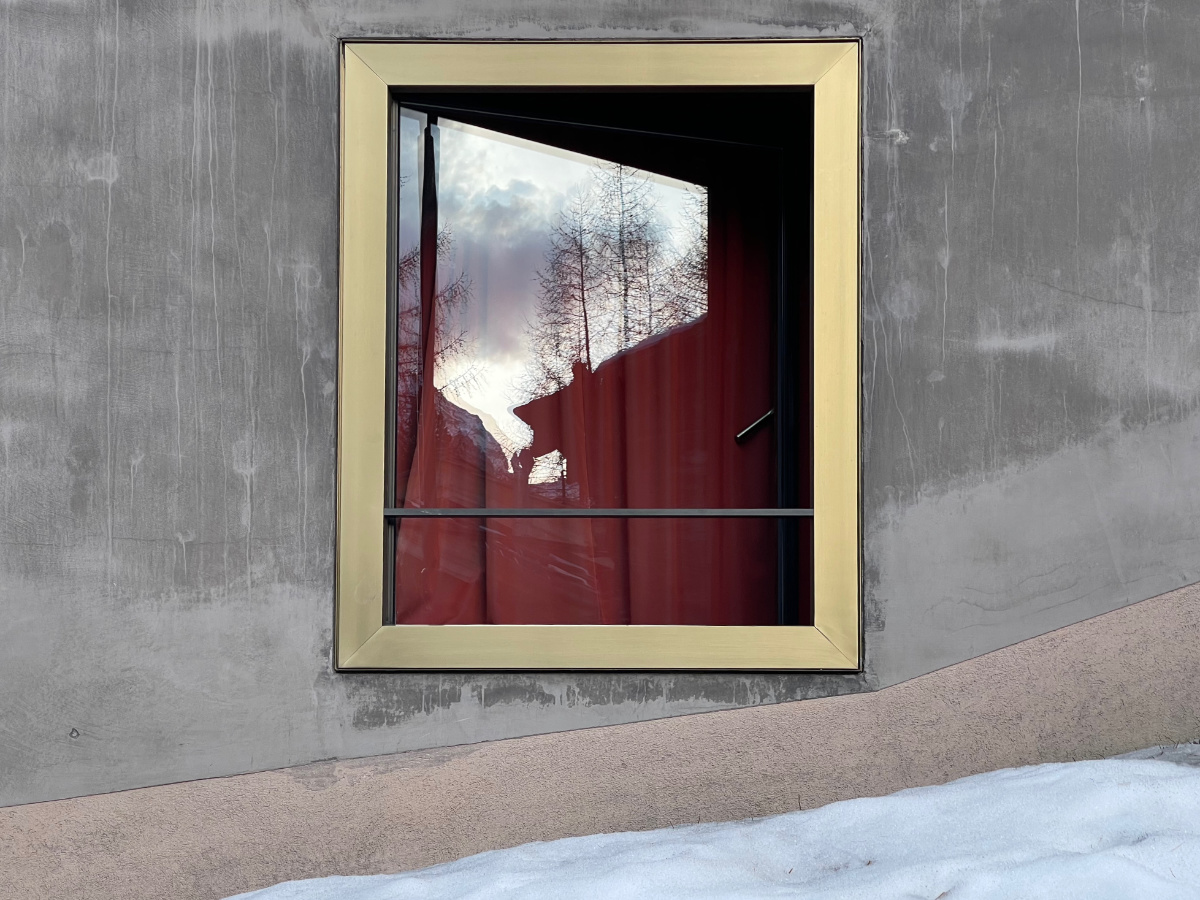Monolith
Zermatt’s youth hostel lies on a hill, which seems to be quite the norm for almost any youth hostel in the world. In a mountain village like Zermatt this might be even more understandable as simply there’s not enough room in the mostly flat areas of the valley for all the houses, restaurants, hotels and yes, youth hostels. The youth hostel in Zermatt was built in the 1950s and over time was clearly showing its age. Especially inside the big bedrooms for many people felt rather outdated. Even in a youth hostel today’s guests request some minimal standards like smaller rooms with their own bathrooms, some more space to store their luggage and at least some amount of privacy. To achieve all of these new demands within the old building was simple not possible without significantly reducing the number of available beds. So the youth hostel in Zermatt went right in the other direction and in 2002 started planning and building two new addons, two separate buildings right and left in front of the old, existing one forming a new reception, a new courtyard which opens up to frame the view of the Matterhorn.
 1/230 s, f/1.6, ISO 32, 26 mm, iPhone 12 Pro Max
1/230 s, f/1.6, ISO 32, 26 mm, iPhone 12 Pro Max
These two new buildings are built as monoliths, as very new and fresh looking bodies with a completely new appeal. The ash grey plaster that is used for these moderns addons is very shiny and smooth, the beautiful windows made from brass are flush with the outer facade, so that these new buildings look very clean, cladded in just one consecutive skin from top to bottom. They are covered with traditional pitched roofs and are slightly angled towards the original building from the 1950s. The new courtyard in between these now three buildings is opening up towards the south, towards the breathtaking scenery of the mountains.
 1/99 s, f/2.2, ISO 32, 64 mm, iPhone 12 Pro Max
1/99 s, f/2.2, ISO 32, 64 mm, iPhone 12 Pro Max
On the inside the two new monoliths are painted in bright, contrasting colors of all shades. These colors even shine through the windows and blend very well together with the ash grey facades of the outside. The 20 new rooms are now significantly smaller and consist of two to four beds per room, every room now has its own bathroom as well. The changes in the old building are not that drastic. But even here the rooms are smaller now but don’t include their own bathrooms.
 1/151 s, f/2.2, ISO 20, 64 mm, iPhone 12 Pro Max
1/151 s, f/2.2, ISO 20, 64 mm, iPhone 12 Pro Max
I always enjoy to observe these contrasts of old and new, it feels like walking on two legs as it should be while walking on just one would be rather hard. So also here the contrast between the old building from the 1950s and the two new monoliths from the 2000s is very stark and even provoking. I’ve read about comments from the local neighborhood which weren’t very inviting and friendly at all. These two new addons provoke and need to prove their right of existence in this rather traditional mountain village. But I think they are doing very well here. They’re heightening the impression of the whole ensemble and lift all three building parts on a new level.
 1/140 s, f/2.2, ISO 20, 64 mm, iPhone 12 Pro Max
1/140 s, f/2.2, ISO 20, 64 mm, iPhone 12 Pro Max
Especially the shiny windows made from brass are real eyecatchers. They come in different orientations but similar sizes. All of them renounce window flannings and window boards and are just completely in line with the ash grey facades made from plaster. The contrast between these warm, metal window frames and the austere facades is just beautiful. I was fascinated by these antagonisms of translucent versus solid and took many photos surrounding the three buildings.
Overall I couldn’t be much happier about the straightforward approach that has been used here. Old remains old and new becomes new. It’s obvious, it’s visible and it’s something we all need to withstand.
For all of you that are more curious about the architectural details, here are two links (one english, one german) with drawings, details and even more photos.